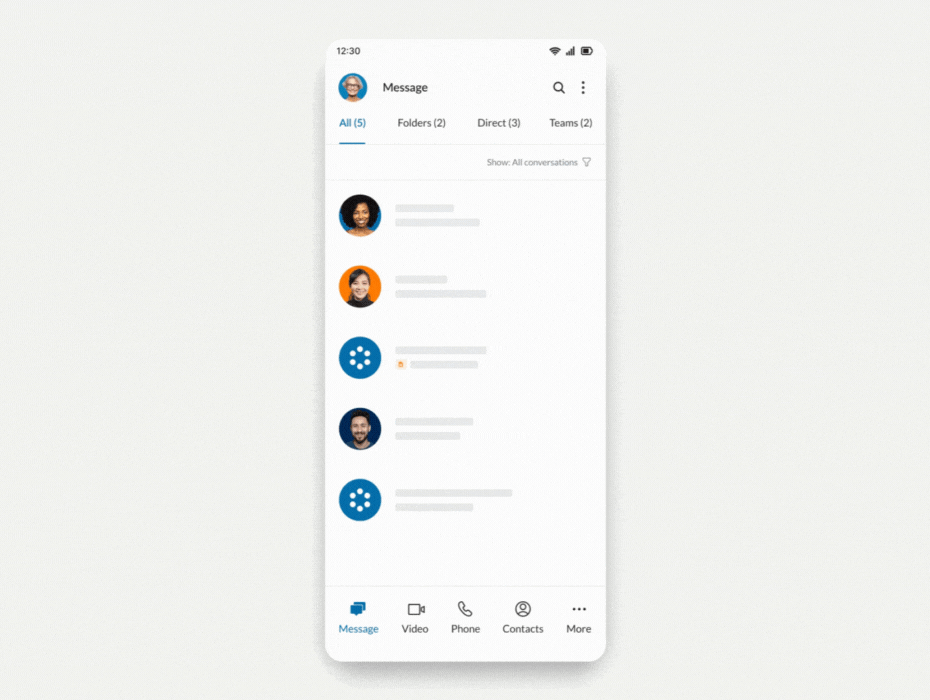If the past three years have taught us anything, it’s that how we communicate is critical to business success.
Our phones are at the center of it all. From discussing a project with a teammate to closing a sale with a large client, calling is preferred by companies of all sizes. And we have the numbers to prove it.
With the help of Ipsos, we recently surveyed more than 350 IT decision-makers about how they currently use voice communication in their workflows and what their plans are for the future.
7 business communication trends for 2023
Our enterprise communications report on telephony (July 2022) shares the results of our recent survey of business owners and how they plan to communicate with their customers and employees in the coming year.
Here’s what we learned:
1. Phone is still a primary business communication tool
Source: A phone that’s so much more than just calling
Over 90% of respondents said that phones are considered a main communication tool. Even with businesses that don’t consider phone to be their primary communication channel, 40% say it’s still one of their main tools.
These findings back up data from a recent NTT global customer experience (CX) benchmarking report, which found that businesses consider phone or in-person communication to be the preferred contact channel for vital business processes.
- 71.4% prefer phone and in-person when handling retention/escalation/dispute resolution issues
- 63.6% prefer phone and in-person for sales proactive (outbound) and 54.8% for sales reactive (inbound)
- 43.6% prefer to handle general customer service issues via phone or in-person
2. Company size doesn’t impact phone usage
It doesn’t matter how big or small an organization is—phone calls remain popular regardless of company size.
According to our study, small companies—ones with 0 to 99 employees—were most likely to say phone is their primary communication tool (58%). Large businesses were the next highest group, with 55.7% of respondents saying phones are their main communication channel.
Overall, the percentage of respondents saying phone is their primary communication method was fairly similar across business sizes.
- Less than 99 employees: 58%
- 100-999 employees: 44.4%
- 1,000-9,999 employees: 55.7%
- 10,000+ employees: 54.5%
- Overall: 52.1%
3. Professionals still prefer phone calls for external comms and one-on-one meetings
Source: A phone that’s so much more than just calling
Our research shows that a majority of employees prefer using the phone for both internal and external business communication.
According to their responses, business leaders prefer phone conversations when speaking with individuals instead of groups. Here’s the breakdown:
- Internal calls: 73.8%
- Internal meetings: 58.6%
- External client calls: 82%
- External client meetings: 60.8%
- External vendor calls: 69.6%
- External vendor meetings: 49%
- Outbound customer calls: 63.4%
- Inbound customer service: 52.1%
Even when speaking to groups of team members or customers in meetings, more than half prefer to use phones.
4. There’s an adoption gap between traditional and cloud phone systems
Traditional solutions still reign supreme, with 64.8% of employees using a business number on a mobile phone and 50.1% using a personal number on a mobile phone for business communication. More than half (53.2%) of companies use legacy on-premise phones for business communication.
At the same time, 30.7% of companies report using cloud-based phone systems. This adoption is expected to increase over time with the rise of hybrid and remote work.
5. Business phone use is expected to increase
Our research also shows that a significant percentage of companies expect phone use to increase over the next several years. In fact, only 5% expect phone use to decrease.
Will phone use increase in the next several years?
29%
say phone use will increase a lot.
34.1%
say phone use will increase a little.
31%
say phone use will stay the same.
6. Businesses want flexible, multi-device phone solutions
More than anything, business users want flexibility from their phone services, especially when it comes to phone features that are accessible through multiple devices.
The ability to place and receive business calls (33.8%) and individual business SMS messages (30.1%) from a personal computer is the feature most are interested in.
Some of the other most popular feature requests include:
- 27.6% want the ability to record calls on demand and store those recordings in the cloud
- 25.9% want high-volume SMS for mass marketing and customer care
- 25.1% want ease of porting existing phone numbers to a new provider
- 23.4% want the ability to automatically log calls in various business-critical apps, like a customer relationship management (CRM) platform
- 22.5% want visual voicemail and voicemail subscriptions
- 22.5% want general local, international, and toll-free phone numbers on demand for customer-facing teams to use
- 16.3% want to send and receive eFaxes
Businesses demanding innovation and feature-rich, flexible phone systems further demonstrate the importance of voice communication now and in the future.
7. Nearly all businesses plan to use SMS (text messages)
Over 95% of businesses are using SMS in some capacity.
While 23.9% of companies consider it their number one communication tool, 42.5% say it’s not their primary tool but still one of their main ones.
Our research also shows that more large companies than smaller ones consider SMS their primary communication tool.
Communication trends: Phones are here to stay
Business leaders continue to invest in phone communication because it’s easy for agents to use. And it’s the channel customers prefer.
Keep your agents and customers happy by staying up to date on the latest business phone practices. Check out our new phone page: A phone that’s so much more than just calling.
Updated Jul 23, 2024














